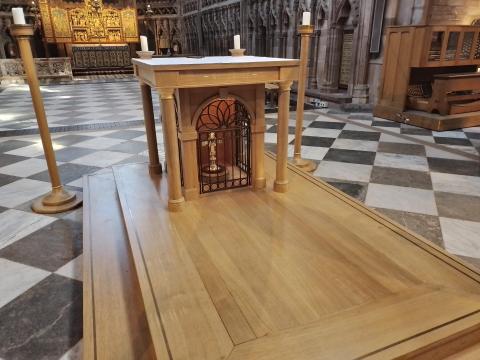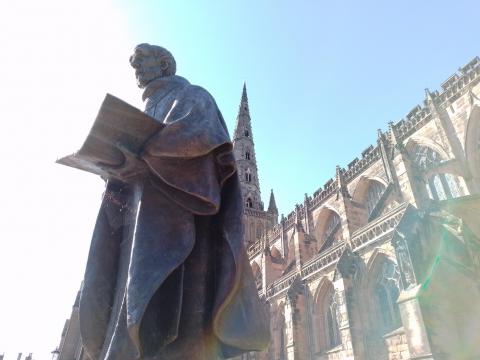Chad

Like many Protestants, I am uncomfortable with a great many canonised persons, commonly called ‘saints’ of the Roman Church. Not only are they venerated, which is polite code for something close to worship, such as receiving prayers and doling parcels of grace for exiting purgatory, but their lives were often at odds with the apostolic church and the clear teachings of scripture. The danger is to dismiss them all as charlatans, when I dare say that a great many, especially those in more distant periods and well before Luther’s reformation, were the real article.
Upon visiting Lichfield recently, I was greeted by a large statue of St Chad, whom Bede credits with its founding. Chad’s peculiar name is not inconsistent with his siblings Cedd, Cynibil and Caelin, all Saxon noblemen. Upon his death, his bones became relics and were moved to various shrines, at which miracles were claimed. Something of these remains are again enshrined at Lichfield, below, much to the Reformers’ and Puritans’ heavenly chagrin. Chad, however, was not responsible for what others did to his bones.

Bede writes of one Trumbert, ‘who tutored me in the Scriptures and who had been educated in the monastery by that master Chad’. This little line suggests that scriptural studies were of greater import to the Anglo-Saxon church than the Roman leviathan across the Channel. Had Chad read, lived and propagated the scriptures, even in those dark ages in which he lived, then he may well have been a genuine herald of saving grace, a real advocate of gospel truth.
It is hard to look back on previous generations and make judgement regarding truth and falsehood, light and darkness. Many of us believe the Lord has always had a remnant on the earth, of which Chad was likely part. The Day will reveal whether he was a man of God or just another bird lodging in the mustard tree.

- Log in to post comments


 Sunday Worship 10.45am & 6.00pm
Sunday Worship 10.45am & 6.00pm